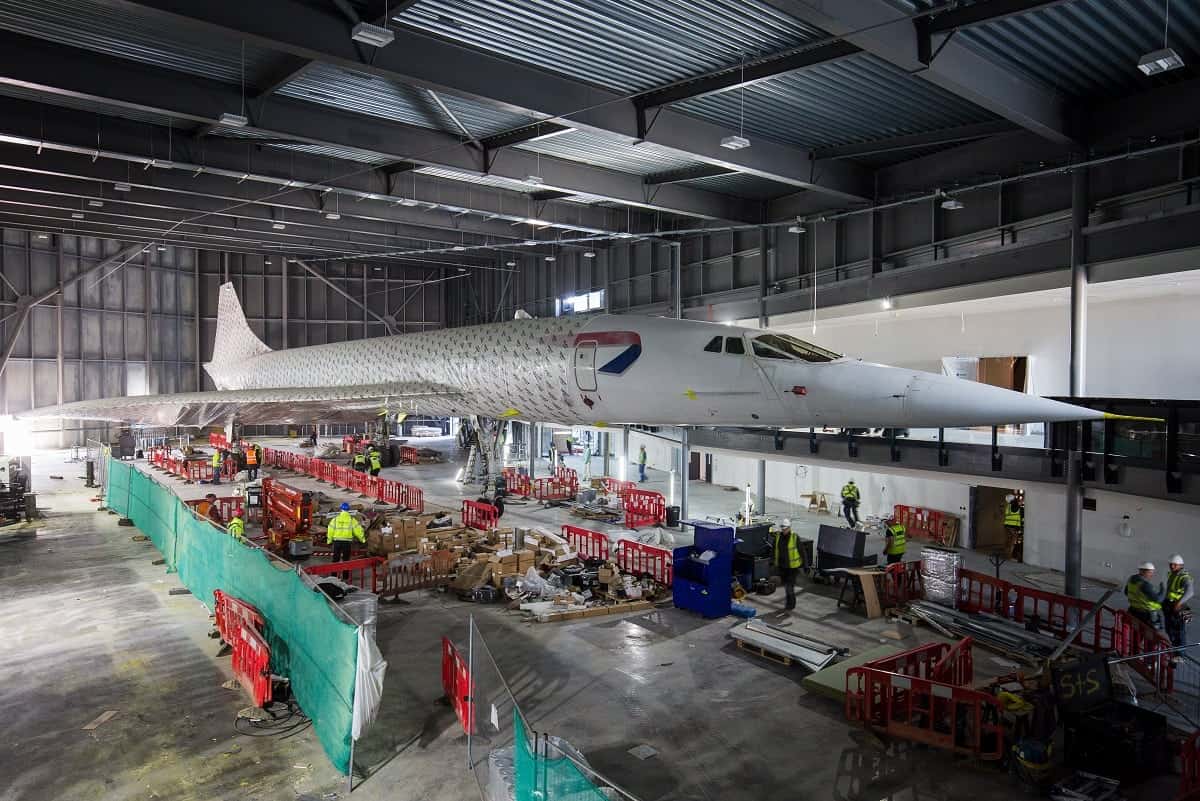
Concorde is unwrapped in its new location at a hanger in Bristol. See SWNS story SWCONCORDE Ahead of the new museum’s highly anticipated launch this summer, Aerospace Bristol has today taken the wraps off its star attraction: Concorde 216, the last of the supersonic passenger jets to be built and the last to fly. April 19 2017.
The last Concorde to be built was unveiled today as the centrepiece of a new £19 million museum – when it was unwrapped from its protective film.
The iconic supersonic plane – number 216, registration G-BOAF – was the last of 20 to be built and flew at twice the speed of sound.
It made its final flight on November 26, 2003 and returned home to Bristol where it stood for years at the side of Filton Airfield – open to the elements.
The plane made its very final journey of just 800m when it was towed across the airfield and into an indoor hangar at walking speed in February.
Packing company Packexe used hundreds of metres of the thick film to protect the plane while building work took place around it in her new purpose-built hangar.
Workers unwrapped the aircraft today ahead of the launch of Bristol Aviation Centre later this summer which will celebrate the city’s aviation history.
Lloyd Burnell, executive director of Aerospace Bristol, said: “It’s fantastic to see Concorde unwrapped and looking stunning in her brand new home.
“As the centrepiece of Aerospace Bristol’s exhibition, Concorde will inspire the next generation to pursue careers in engineering and develop the big ideas of tomorrow.
“We can’t wait to welcome our first visitors on board this summer.”
Packexe CEO Andrew Orchard, said: “We pride ourselves on innovation and have over 25 years’ experience of using our technology and expertise.
“Although we usually supply protective film for various industries, we are always ready to meet a new challenge.
“So when Aerospace Bristol, one of our favourite charities, asked us to wrap Concorde to protect her from the final stages of building works – how could we refuse?”